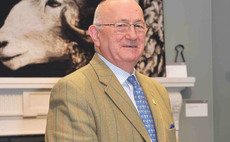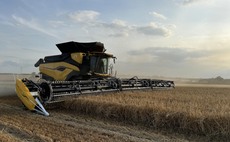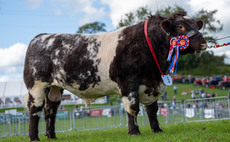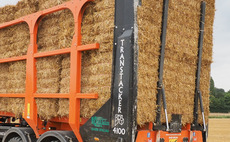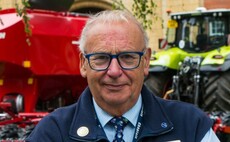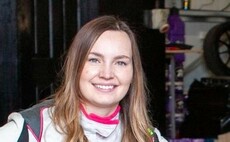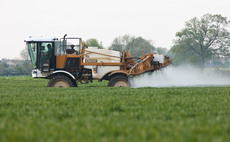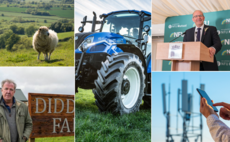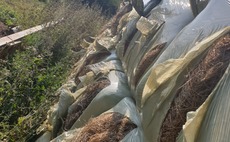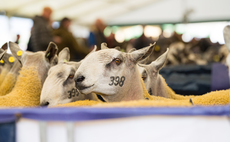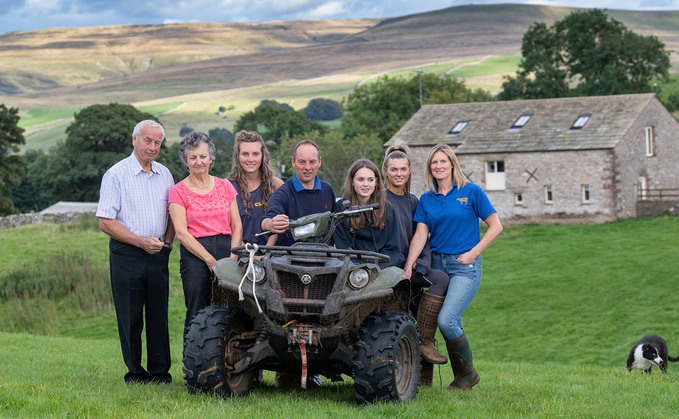
Just more than a decade ago, it was all lights, camera, action for the Marston family, as they geared up to appear
on season two of the popular TV show Lambing Live. Lucy Baxter revisits them to see how it changed their lives.
Since 1911, Easegill Head Farm has been a working farm and family is certainly still at the heart of it.
The fourth generation to farm here, husband and wife, Andrew and Rachel Marston are at the helm of the business and have taken the farm to new heights especially after being given the chance to appear on one of the BBCs most well-received farming programmes, Lambing Live.
They say the experience changed everything for the farm near Kirkby Stephen, Cumbria. The family was approached to film the second season of the show due to their location, type of farm and a unique historical aspect - their Swaledale sheep have been on this land since the farm began.
After Lambing Live aired, Andrew and Rachel, along with their three daughters, Catherine, Abigail and Olivia, and Andrews parents, Donald and Christine, received lots of publicity and letters from all over the world saying how much they had enjoyed watching what they get up to on their family farm.
Andrew says: It was less common than it is now for farming to be on the television and so we were surprised how interested the general public was in farming and wanting to learn.
We had this amazing opportunity, thanks to Lambing Live, to show them what we do and why we do it. We think that it is very important for the public to know where food comes from and wanted to play a little part in educating them.
The show prompted the family to diversify. In 2012, the couple applied for a grant to convert one of the barns into a holiday cottage, which is aptly named , meaning tourists can visit the farm and see what the family does day to day.
This diversification is still successful a decade on, with most of 2024 and all of 2023 fully booked - about 70 per cent being returning customers. They have had people from Japan, Australia, New Zealand, Taiwan, Germany and other places too.
Catherine, 21, the couples eldest daughter, says: Everyone that comes is genuinely interested. They are really listening to what we say and asking complex questions, wanting to know more about taking care of livestock.
They like to get involved practically in the work on the farm and see what happens. They like to go and feed the hens and collect the eggs and love to see the dogs working. And of course, lambing time is the busiest as they love to see it and really get their hands stuck in."
School
Catherine was only nine when the programme aired and she recalls it being weird that people recognised them.
She says: It was exciting at school, but it was like you were famous and people would say they saw you on the television.
The school even came to the farm to have a look round too, which was nice.
To this day, the family are still spotted, with Rachel telling a story about how much people were invested in the show.
The other day when Catherine was in the ring selling sheep at Bentham, there was a man behind me who said, by heck, she has grown since Lambing Live hasnt she, says Rachel.
But the livestock are still as important and loved as ever.
Andrew has always had a passion for the Swaledales they live on the moor during winter and are a harder more resilient breed of sheep.
The family farm about 142 hectares (350 acres) of owned and rented land, including the fells. Along with the 170 pedigree Swaledales, they have 350 Beltex-Texel ewes and about 420 Swaledale crossed with Bluefaced Leicester tups.
They also have 10 Limousin pedigree beef cattle and about 35-40 British Blue pedigree and Limousin cross.
The farm lambs about 950, from the middle of March to the end of April, with a scanning percentage of 180 per cent for the Swaledales and 160 per cent for the Beltex-Texels. The sheep are fed on grass silage and concentrates.
The Swaledales and Mules go on a deadweight system straight to the abattoir, while the Beltex-Texel lambs sell to store through the auction at Kirby Stephen. The Beltex-Texels were introduced after foot-and-mouth, because even though they are harder to lamb, they do not need a lot of feed and are cheaper to keep. Plus, they bring a premium price and product. They keep the gimmers as replacements or sell as breeding sheep.
The cows are mainly fed silage and concentrates, with the calves having a barley and wheat mix. They calve all year and if it is a dry year, the cows will be out for five to six months.
Andrew does not use a bull, but instead uses artificial insemination to reduce cost and it means he can use better bulls.
They sell them as stores as young as they can, with the pedigree bulls being sold at Carlisle auction mart. They aim to produce cows suitable for people to show to make a premium.
Since the show, their farm has increased in size and sheep numbers.
Andrew says: We are breeding some really good Swaledale rams now. Our ram record for one of these was 20,000, which for our little family farm, I am really proud of.
The cattle are also more successful now, with record high sale prices too. One of our bullocks has won champion steer at the Royal Highland Show, which is another tremendous achievement.
The farm is on a Higher Level Stewardship agreement and they have a Site of Special Scientific Interest which contains rare flora and fauna which this status seeks to protect.

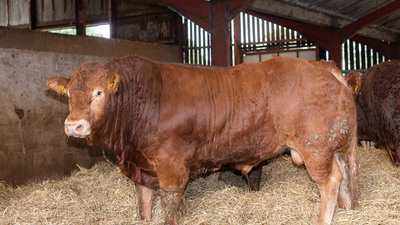
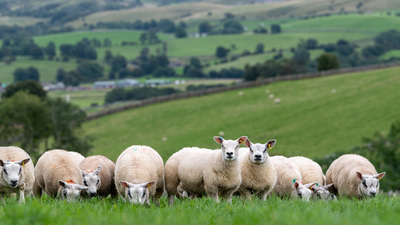
quote
"We think that it is very important for the public to know where food comes from and wanted to play a little part in educating them"
ANDREW MARSTON
Text 5
Future
As for the future for farming, their strong family unit, including Andrews parents, are still working together. He says: I have always been interested in farming, more so the stock and animal side of it.
At the moment, things are very uncertain, but you just have to carry on as people still need to eat.
There is a future for farmers for definite, but currently we are not quite sure which way it is going to go.
Catherine is also working on the farm, but she is keen to promote agriculture as a career choice, given that her own experience was not unduly positive.
She says: Farming has always been something I have been interested in, but when I was in school I was very determined to get the good grades because I did not want people to think that I had fallen back on farming because I was thick.
That was a really big thing for me at school. A teacher told me that I was not an A-grade student, so I went and got A grades in nearly every subject just to prove to myself I could do it.
I hate that a lot of people have this stereotype that farmers are thick or that they do not know what they are doing so they have to go into the farming industry.
I made the choice, but you still get the judgement. Sometimes when you talk to people and they find out you are a farmer, they do not give you the same respect as if, for example, you say you are a lawyer.
I do not know why that is, but it needs to change. Our generation needs to speak up a lot more.
Young people need to be taught that farming is a serious occupation.
As well as farming, Catherine has a small diversification business of her own, called . She paints abstract and colourful wildlife and floral pieces that she sells her home and the farm are both clear inspirations.
She says: My paintings are inspired by my surroundings on the farm. I love painting animals and, in summer, when the barn is free, I turn it into my art studio.
The farm has so many opportunities, I am excited about what is to come.
Stay Lambing Live
For more information about the Marston's diversification, you can visit Stay Lambing Live's website
Farm Facts
- 142 hectares (350 acres) of owned and rented land, including the fells.
- The farm lambs about 950 from the middle of March to end of April.
- Easegill Head Farm is home to 10 Limousin pedigree beef cattle and about 35-40 British Blue pedigree and Limousin cross.
- The family has a number of diversification businesses, including a holiday cottage and a painting business.
- The farm uses only artificial insemination for the cattle.






